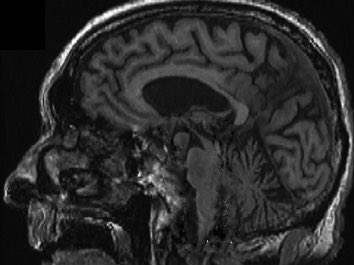
Throwback #ContinuumCase!
A 59 year old developed slowly progressive imbalance and falls. Exam showed a mild spastic quadriparesis.
Cervical T2 and post-contrast T1 MR below. What’s the diagnosis, #neurotwitter?🧵
A 59 year old developed slowly progressive imbalance and falls. Exam showed a mild spastic quadriparesis.
Cervical T2 and post-contrast T1 MR below. What’s the diagnosis, #neurotwitter?🧵

What treatment would you recommend for this patient?
The image demonstrates:
➡️ Multisegment T2 signal prolongation in the cervical cord
➡️ Central canal stenosis
➡️ “Pancakelike” transverse enhancement just below the level of maximal stenosis
➡️ On axial, enhancement mainly in cord white matter
Altogether, suggestive of…

➡️ Multisegment T2 signal prolongation in the cervical cord
➡️ Central canal stenosis
➡️ “Pancakelike” transverse enhancement just below the level of maximal stenosis
➡️ On axial, enhancement mainly in cord white matter
Altogether, suggestive of…


Spondylotic cervical myelopathy!
This characteristic pattern of compressive myelopathy was beautifully described by @EoinFlanagan14 and colleagues in this report in @ANA_journals
onlinelibrary.wiley.com/doi/full/10.10…
This characteristic pattern of compressive myelopathy was beautifully described by @EoinFlanagan14 and colleagues in this report in @ANA_journals
onlinelibrary.wiley.com/doi/full/10.10…
Key points from this case:
➡️ Not all cord signal is inflammatory/immune
➡️ Spondylotic myelopathy may show characteristic “pancakelike” enhancement
➡️ These patients are usually symptomatic: treatment is decompression
➡️ Enhancement may persist months to years post-surgery
➡️ Not all cord signal is inflammatory/immune
➡️ Spondylotic myelopathy may show characteristic “pancakelike” enhancement
➡️ These patients are usually symptomatic: treatment is decompression
➡️ Enhancement may persist months to years post-surgery
Thanks to @shamik_b and @EoinFlanagan14 for a great image and article on Spondylotic and Other Structural Myelopathies in the February 2021 issue of @ContinuumAAN!
journals.lww.com/continuum/Full…
journals.lww.com/continuum/Full…
• • •
Missing some Tweet in this thread? You can try to
force a refresh









